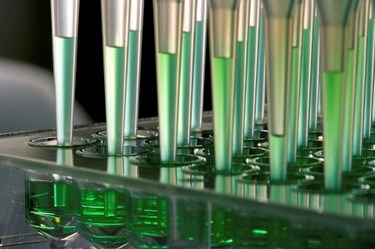U-M Researchers Use Silly Putty Ingredient To Study Stem Cells

Researchers from the University of Michigan have discovered how mechanical forces in the environment influence stem cell growth and differentiation. The scientists arrived at the findings using a key ingredient in Silly Putty for their experiments.
Using an ultrafine carpet made out of polydimethylsiloxane, a key ingredient in Silly Putty, the scientists were able to coax stem cells to morph into working spinal cord cells. The Silly Putty component was made into a specially engineered growth system with microscopic posts. By varying the post height, the researchers were able to adjust the stiffness of the surface where the cells are made to grow.
Jianping Fu, assistant professor of mechanical engineering at the University of Michigan, said, “This is extremely exciting. To realize promising clinical applications of human embryonic stem cells, we need a better culture system that can reliably produce more target cells that function well. Our approach is a big step in that direction, by using synthetic microengineered surfaces to control mechanical environmental signals.”
Stem cells that were grown on tall, softer micropost carpets morphed into nerve cells faster and more often than those grown on stiffer surfaces. The colonies of spinal cord cells that grew on softer micropost carpets were also 10 times larger and four times more pure than those grown on rigid carpets or traditional plates.
The study is the first to directly link physical signals to human embryonic stem cells differentiation, in contrast to chemical signals. Professor Jianping Fu says the findings may lead to a more efficient way of guiding stem cells to differentiate and provide specialized therapies for diseases such Alzheimers, Huntington’s, Lou Gerhrig’s disease, and others. “Our work suggests that physical signals in the cell environment are important in neural patterning, a process where nerve cells become specialized for their specific functions based on their physical location in the body,” said Professor Jianping.
The study from the University of Michigan was published online at Nature Materials this week.
